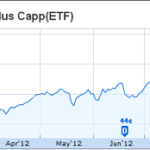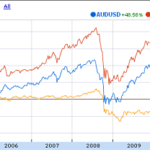My cover is blown. Months ago, I figured out what I believe to be the most insanely profitable and market-edge strategies of all time. Imagine being able to go to the casino and play Roulette with as much money as you like but instead of the house having a small advantage over you due to the 2 green slots, you have a substantial edge of the house. Using closing daily share price date for the S&P500 (SPY) I went through and numerically calculated the percentage gains of various time periods throughout the prior ten years to see if I could find any patterns – and I did. I found that using the S&P500 (SPY), if you buy on the last day of the month and sell a day later, your gains blew away the returns of buy and hold over the prior decade. I found some other interesting patterns as well, which I’ll get into later.
I know, I know, you’re probably questioning why I didn’t share this one with you like I shared how profitable shorting leveraged ETFs can be and the easiest money on a gold pairs trade I’ve ever made. Well, I was keeping this one to myself because once the secret’s out, market information is dispersed and arbitrage fills in the inefficiencies like gas fills a vacuum. Well, when the USAToday reported a similar finding today, apparently lifted from the Stock Trader’s Almanac, I figured the cat’s already out of the bag. I’m not just going to regurgitate their article though. I did this analysis myself, much more thoroughly and it runs up through June 2010, not May 2009 which their data does.
Why Do Stocks Outperform on Day 1?
While the article at USAToday listed a few ideas, the most plausible to me is that millions of 401(k)s, pension funds, IRAs and other funds flow IN on the first day of the month, thus driving shares up. Due to this effect somewhat driving shares unnaturally above a perceived “fair value”, market forces being what they are, funds flow back out elsewhere in the month as stocks are perceived to be overvalued. This might seem implausible on a small scale, but across billions of transactions, millions of traders and hundreds of data points across 10 years, the data is irrefutable and the hypothesis certainly seems plausible to me.
Their findings basically pointed to a buy on the last day/sell on the first day strategy delivering a gain of 4,399 1st day of the month vs. a loss of 3,809 for the rest of the month. Unfortunately, they were referring to the DJIA and what was reported here isn’t that granular.
My data is based on the S&P500 and I discovered some more interesting patterns (From Jan 2000-June 2010):
- Your Gain was 33% over the decade as opposed to nothing staying long. Now, spread over 10 years, that doesn’t sound like much, but if you’re pulling that money out and investing in a money market on the side to boost another 2% per year, using leverage or otherwise boosting your returns in between, it’s certainly nothing to cough at in comparison to barely breaking even staying long stocks.
- There was NEVER a single year in which the strategy lost more often than it won. So much for standard deviation wiping out your strategy huh? The worst I ever came across was in 2006 when it was 6 to 6. Most other years were 8 to 4, 7 to 5 and even a 9 to 3 in there.
- Here’s the Goodie they didn’t tell you about: Since I ran all kinds of scenarios, what I found was that holding for 2 days actually outperformed the 1 day strategy, boosting your return to about 40%. From there, it starts to decline again over the hundreds of data points involved.
- The trend has been very strong in 2010 with the past couple months bringing in big returns for my trades. This might lead you to wonder if you’re better skipping or shorting on months where the trend already went up a few times in a row…
- There is no benefit to trying to predict trends. The strategy is just as likely to work (with statistical significance) on a month where the prior month was down vs. the prior 3 months down vs. the prior month up or prior 4 months up. It’s totally random, but with a slight positive bias of course.
Of course, in order for this to work, you’ve gotta keep your transaction costs down (see how to Trade ETFs Free), use large sums to outweigh those costs and you should only keep your investments steady or increase in step changes but not try to jump around with different amounts each month or you’re basically guessing and you may do a 10X size trade on a bad month and wipe out all your prior earnings and then some.
I’ve discovered a few other trends that I’m refining and I’ll be sure to report back – be sure to follow my RSS for the next update. For instance, I just went way long with leverage today and we’ll see what happens by Friday or Monday!
Disclosure: Long SPY.











{ 0 comments… add one now }